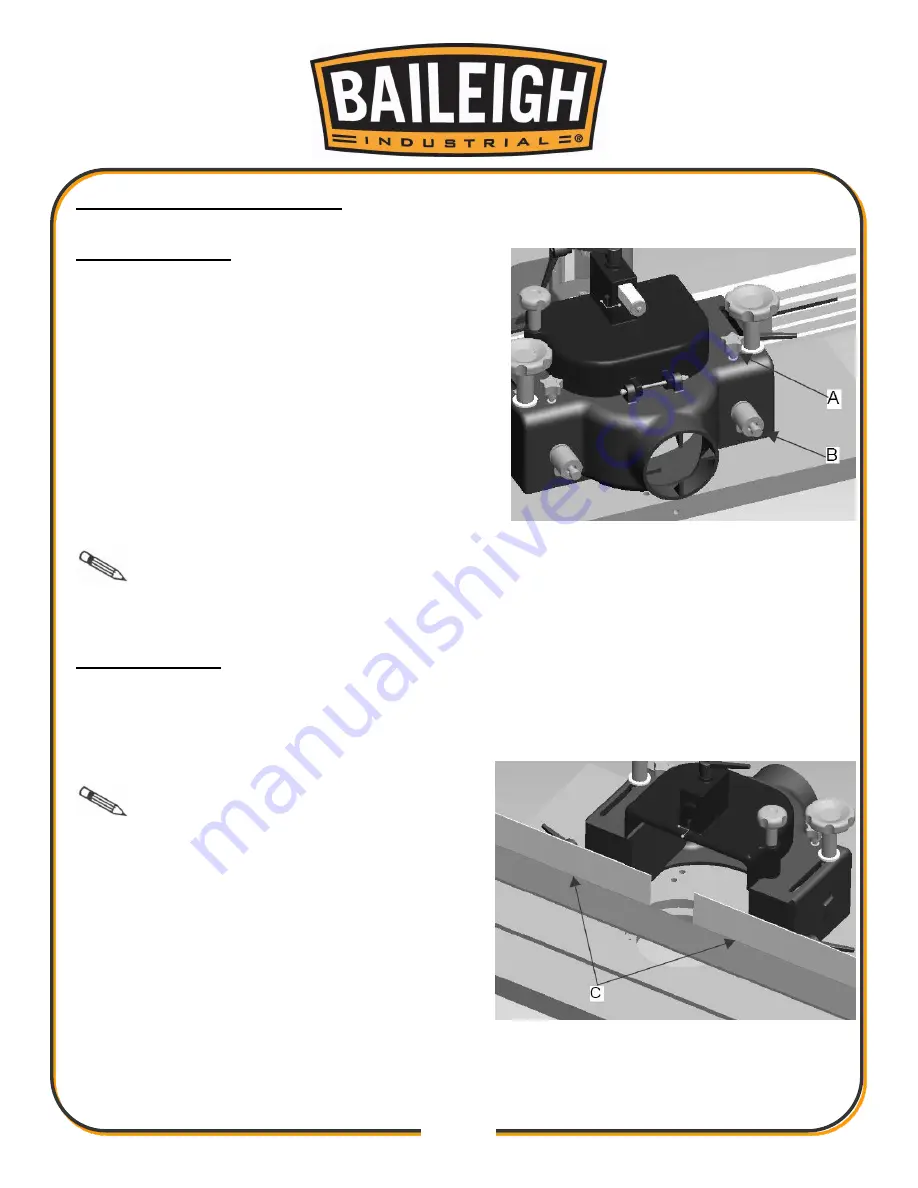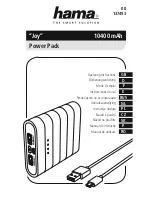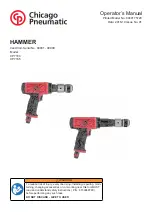
28
28
Fence Positioning & Alignment
Fence Positioning
The two faces of the fence are independent of one
another and can be set at different positions to allow
for different shaping tasks. To adjust
1. Loosen lock lever (A, Fig. 20).
2. Adjust the position of the fence by turning the
adjustment knob (B)
3. When the fence is in the desired position,
retighten the lock lever.
4. Repeat this process for the other side of the
fence, if necessary.
Fig. 20
Note:
There are two sets of holes on the table top for attaching the fence. The
most common set-up positions the fence so that it runs parallel to the miter slot. The fence can,
however, be rotated 90° from the position by using the second set of holes in the table top.
Fence Alignment
Before using the shaper, it is important to make sure that the two fence faces are parallel. Use
the following steps to ensure the parallelism of the two fence halves.
1. Use a straight edge that is long enough to span the length of the entire fence and position it
up against both fence halves (C, Fig. 21).
Note:
Before placing the straight
edge up against the fence. Make certain that the
fence lock knobs are securely tightened.
1. Adjust the fence faces so that they are as close
as possible to the same parallel position.
2. If the fence faces are not parallel, place shims
between the back of fence piece and the face
fence mount, with some trial and error shim
adjusting, parallel fence faces can be achieved.
Fig. 21
Summary of Contents for SS-2822
Page 29: ...26 26 Electrical Schematic...
Page 53: ...50 50 BODY PARTS DIAGRAM...
Page 55: ...52 52 ELEVATION PARTS DIAGRAM...
Page 57: ...54 54 SPINDLE PARTS DIAGRAM Spindle and arbor is separate...
Page 60: ...57 57 FENCE PARTS DIAGRAM...
Page 62: ...59 59 ELECTRICAL PARTS DIAGRAM...
















































